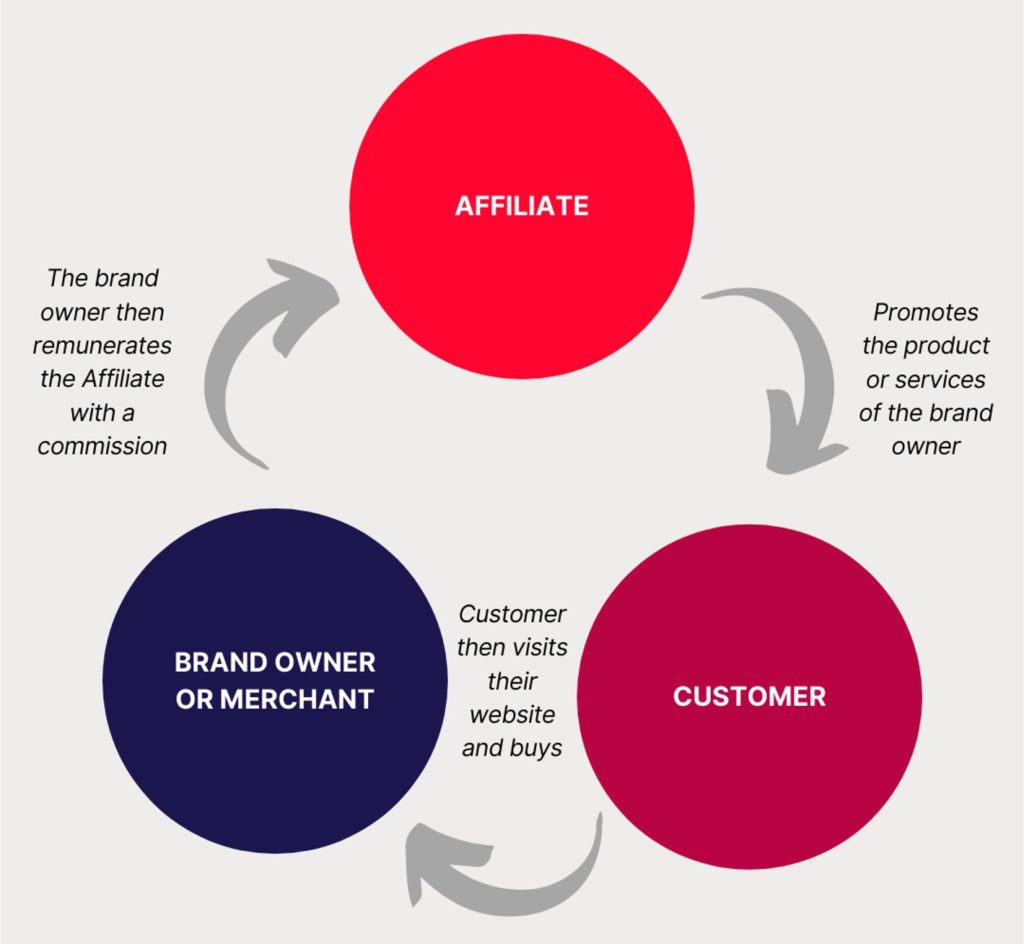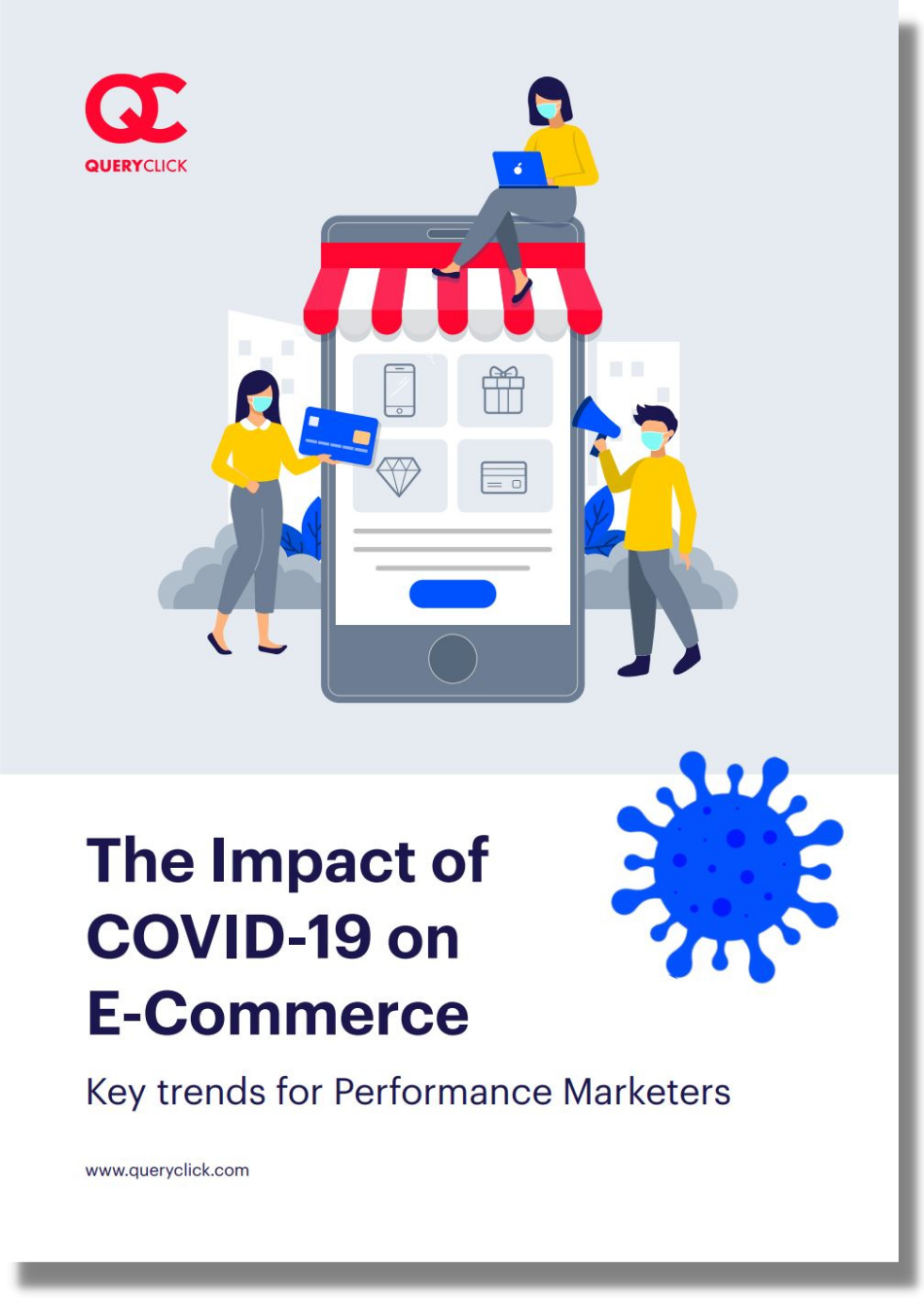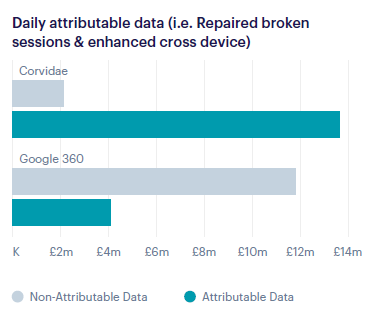What Role Does Affiliate Marketing Play in The Conversion Path?

For many brand owners affiliate marketing is a key part of the marketing mix but it is often fraught with difficulties around effective measurement.
So, what are some of the challenges marketers face around it? And how can you solve them?
We dive in to these in this blog.
What is affiliate marketing?
To boil it down to its’ simplest definition affiliate marketing involves third party “affiliates” promoting the products and services of a brand in return for some form of commission payment.
In essence, there are three parties that are involved in the process as shown below:

- Brand owner – or merchant who is looking to spread the word on their products and services and is willing to financially incentivize 3rd parties that can help in this process
- Affiliates – who are willing to help promote and convince customers of the value of a product or service in return for a commission
- Customer – and there is the end consumer who, based on the Publishers/Affiliates prompt or recommendation, visits the brand owners website and buys their product or service

In an ideal world it’s a ‘win-win-win’ for all of the parties involved, for different reasons. And it’s popular – with the market in the US alone predicted by Statista to reach a value of $8.2bn by 2022.
Interestingly, the segment has been impacted negatively recently during COVID-19. With a number of reports suggesting that affiliate revenues are down markedly due to a mixture of factors including the surge in online search due to the pandemic (which lessens the need for affiliates in your mix), dramatic shifts in the type of products being bought online and brand owners retrenching or reducing commission levels in an attempt to weather the storm.
Although it’s important to note, like other aspects of COVID-19, the impact has varied depending on which sector you are focused on.
So there have been affiliate winners and losers across the board.
What role does it play in the marketing mix?
It’s fair to say affiliate marketing plays a fairly pivotal role in the marketing mix – and it’s a popular tactic. Depending on which statistics you look at: upwards of 80% of brands employ affiliate marketing; with Rakuten reporting that nearly 90% of advertisers view it as important for their strategy.
So, what is the shape of this type of marketing?
In the early days of affiliate marketing a lot of the focus was on affiliates driving traffic for brands. And the hard work of nurturing to sale and conversion was the responsibility of the brand owner.
However, the balance of power has shifted in recent times.
With changes in the market meaning that the power of independent, third party influencers and bloggers are very real. Increasingly, consumers are looking to them for recommendations and guidance around prospective product choices. And it’s this level of trust that brand owners are trying to tap into in their affiliate marketing strategies.
With content, adverts and recommendations shared by affiliates – on their third party blogs and social networks – arguably carrying more weight than other marketing approaches on the brand owners own marketing channels.
In this new model – where the numbers suggest that as many as 74% of shoppers make buying decisions based on social recommendations – the equation is about much more than just site traffic for the brand owner. It’s about the quality of the content created by the affiliate to educate, persuade and help convert prospects on behalf of the brand owner.
It also opens up the possibility of reaching new, untapped audiences that the brand itself isn’t able to easily access directly.
Challenges in unravelling affiliate attribution complexity
So, the model sounds attractive all round.
But one of the biggest challenges in the whole equation is proving the value in your affiliate marketing and establishing which channels actually influence the customer to buy.
Taking a step back for a moment – this is difficult enough without the need to account for affiliates. Adding them in just muddies the water further.
Let’s take a look at the example below:
- A customer is interested in buying a pair of trainers.
- They have initially been influenced by brand communication from a specific brand owner both on and offline.
- As part of their research process they also visit the blog of an independent influencer that they trust for clothing reviews (the affiliate).
- Based on a detailed review on their blog click through to the specific brand owners website to view the trainers but don’t buy at this stage.
- They make a couple of subsequent visits over the next few weeks to the brand owners’ site, again without buying.
- Finally, they click through a re-targeting ad by the brand itself and buy the trainers.
This is clearly a fairly lengthy and complex buying decision.
Now, if the brand owner – as many still are – is using an oversimplified attribution model like Last-Click (which is the default in packages like Google 360 and Adobe Analytics), 100% of the credit for the sale is going to be given to the final re-targeting advert.
This is a gross over-simplification in anyone’s book – and an analysis that completely ignores the fairly pivotal contribution of the affiliates’ blog article about mid-way through the process.
So, not only is this approach failing to adequately unravel and attribute the incrementality of each of the various touchpoints in the customer journey.
It is also seriously undervaluing the impact of the affiliate’s marketing efforts which has implications for overall sales revenue and ROI if not correctly interpreted.
What you need is an attribution approach that is able to value your affiliate marketing contribution across the customer journey as:
- Introducer
- Influencer
- Closer
And that is granular enough to cut and slice the data across channel, campaign and event visit level views.
And answer some of the key questions you need to be asking around affiliate marketing including:
- What affiliate campaigns are really impacting our sales and ROI?
- What types of activity really deliver incremental sales?
- Where in the funnel are affiliate marketing campaigns impacting conversion?
- What is the true cost of these campaigns and impact on ROAS?
- Are affiliate campaigns impacting performance in ways we simply can’t “see” right now?
Even moving your analysis on from Last Click to other slightly more sophisticated multi-touch attribution models like Linear, U-shaped and Time Decay – with all of their limitations – only partly gets you to where you need to be in attribution terms.
Why your underlying data is as important as your choice of attribution model
Before we move on to take a look at how you get this granular and journey-based view of your affiliate marketing contribution it also important to highlight an additional issue – that is as (if not more) important – as the type of attribution model you choose to apply.
That is the quality of the underlying data you are feeding into your analysis.
And again, this is where common packages like Google 360 can seriously skew the view that you get on the real impact of your affiliate marketing efforts – and the wider customer journey – due to the limited way they analyse web-based activity.
It has been widely covered that they do a pretty poor job of stitching together data from multiple web visits, across multiple devices and time periods in order to create a useful picture of individual customer journeys.
The chart below shows that using deterministic analytics data only (i.e. pixel and cookie data) – to create a picture of the individual’s behaviour behind their multiple devices – even where advanced session joining algorithms are employed as with Google 360 – generates data that is around 80% incorrect.

The alternative approach being used by QueryClick’s Corvidae platform in this example, is a Machine Learning model approach, which effectively rebuilds that data for a much more accurate picture.
So, getting your underlying data right is foundational – before you use it to better assess your affiliate marketing efforts.
Need help with understanding your conversion path?
Our attribution experts are here to help.
Own your marketing data & simplify your tech stack.
Have you read?
Chrome’s announcement on dropping cookie opt-in last month closed the door on a 5 year saga for marketers. But what is the landscape like in 2025 for cookie-based measurement?
Generative AI is transforming the way that marketers plan and assemble content for their Paid Ads. As big platforms like Google, Meta and TikTok increasingly build the tools needed to...
In a surprising move that has sparked heated debate, Mark Zuckerberg announced on his Instagram that Meta will be reducing its levels of censorship and in particular fact-checking on its...




